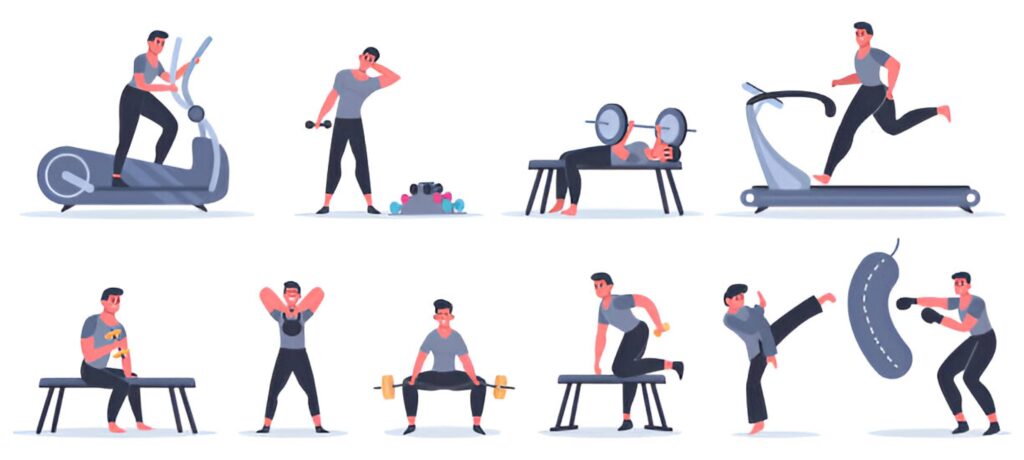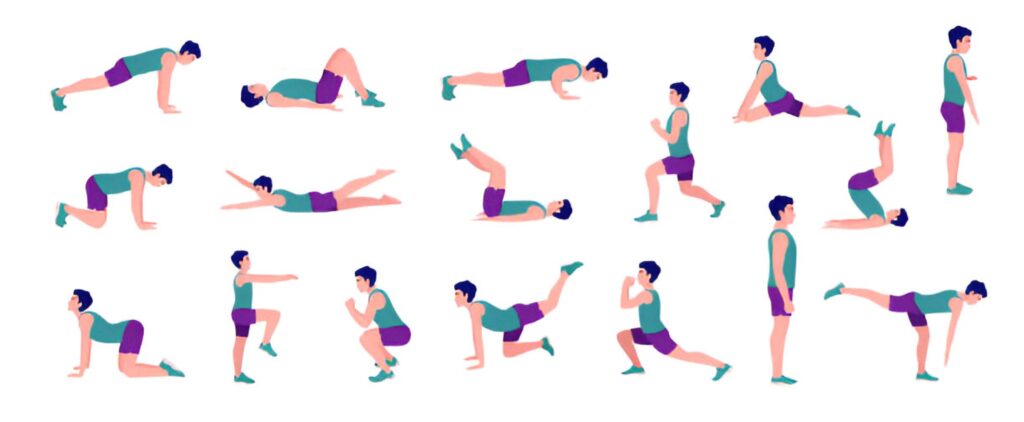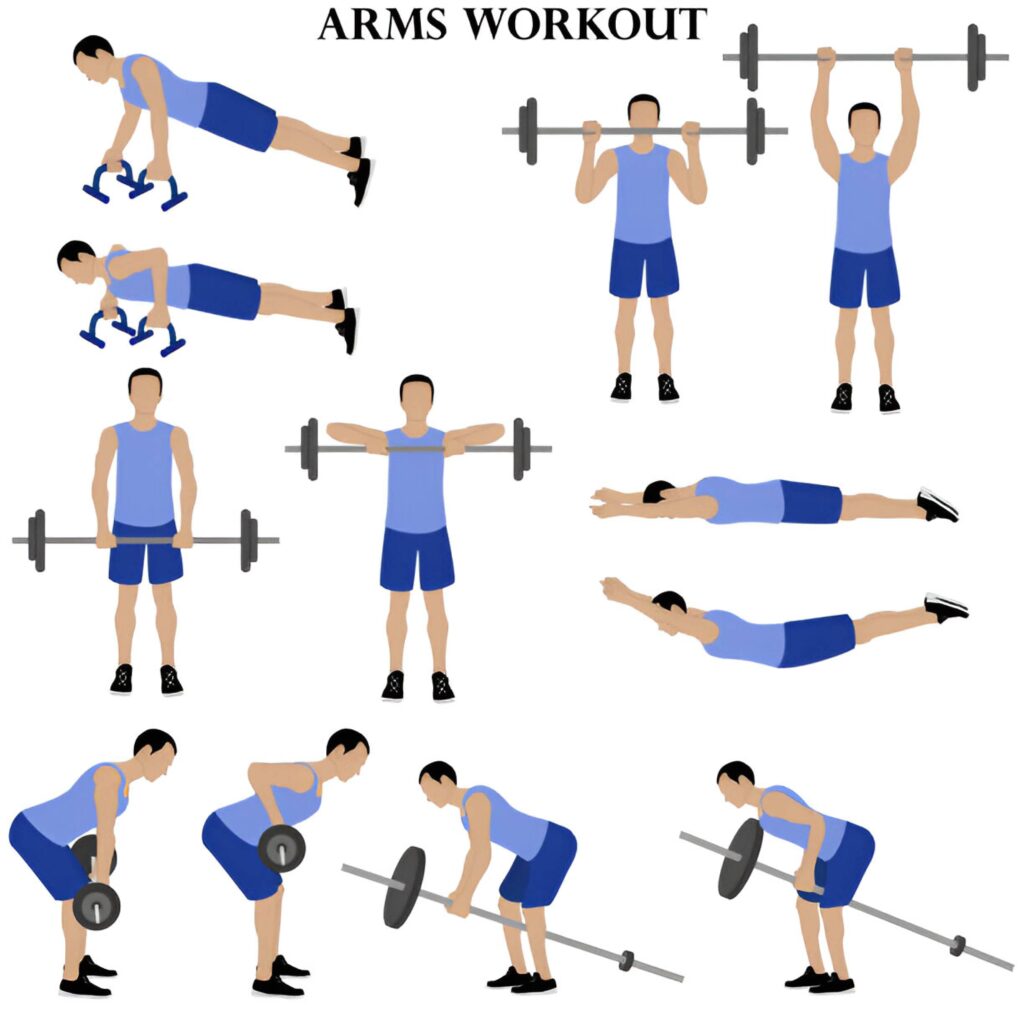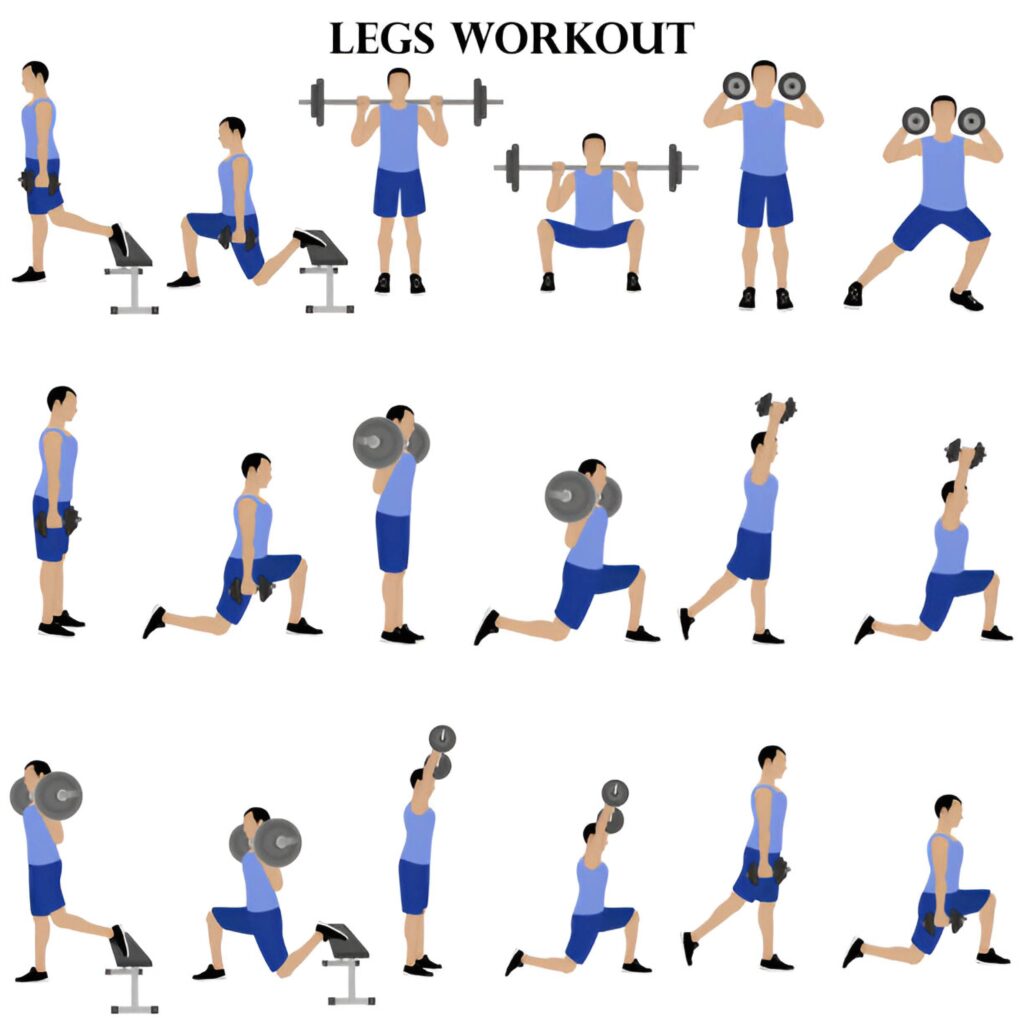Ultimate Guide: Tailored Weight Loss Exercise Plan for Men
Ultimate Weight Loss Exercise Plan for Men
Get ready to crush your weight loss goals with this ultimate guide to the best weight loss exercise plan for men. Whether you’re aiming to shed a few pounds or completely transform your physique, this comprehensive plan has everything you need. From strength training to cardio, we’ll guide you step by step to create an effective and sustainable workout routine that helps you achieve your fitness dreams. It’s time to take the first step towards a healthier, stronger you!

Table of Contents
The Importance of a Workout plan to lose weight for men
When it comes to weight loss, having a personalized exercise plan tailored specifically for men can make a significant difference in achieving your fitness goals. Generic weight loss exercise plan for men may not take into account individual differences such as body composition, metabolism, and fitness levels. By crafting a plan that is customized to your unique needs, you can optimize your efforts and maximize the effectiveness of your Workout plan to lose weight for men.
The impact of tailored workouts on weight loss
A tailored exercise plan takes into consideration your body’s specific needs and challenges, allowing you to target areas where you may be prone to storing excess body fat. This targeted approach can lead to more efficient fat loss and better overall results.
How individual differences affect exercise effectiveness
Men have different body compositions and metabolic rates compared to women, which means their exercise needs are also different. Tailoring a Workout plan to lose weight for men to account for these differences can lead to more effective weight loss and muscle gain.
Benefits of a personalized approach to fitness
A personalized exercise plan can help you achieve fast weight loss, gain muscle, and improve overall fitness. By focusing on your specific needs and goals, you can create a sustainable and effective weight loss exercise plan for men that works for you.
Assessing Your Fitness Goals and Current Physical Condition
Before crafting a weight loss exercise plan, it’s crucial to assess your fitness goals and current physical condition. This step sets the foundation for creating a plan that is realistic and achievable.
Setting realistic weight loss goals
Setting realistic and achievable weight loss goals is essential for long-term success. It’s important to consider factors such as your current weight, body fat percentage, and overall health when setting these goals.
Evaluating current fitness level and health status
Understanding your current fitness level and health status is crucial for designing a safe and effective exercise plan. This assessment can help identify any underlying health issues and determine the appropriate starting point for your workouts.
Identifying specific areas for improvement
By identifying specific areas for improvement, such as increasing muscle mass, reducing body fat, or improving cardiovascular endurance, you can tailor your exercise plan to address these goals effectively.
Choosing the Right Types of Exercises for Weight Loss
Incorporating a variety of exercises into your workout routine is essential for achieving optimal results in weight loss and overall fitness.

Cardiovascular exercises for burning calories
Cardiovascular exercises, such as running, cycling, and swimming, are effective for burning calories and promoting weight loss exercise plan for men. These activities elevate your heart rate and help you burn excess body fat.
Strength training for building muscle and boosting metabolism
Strength training, including weightlifting and bodyweight exercises, is crucial for building muscle mass and boosting metabolism. This type of exercise helps you burn fat even when at rest, making it an essential component of any weight loss exercise plan for men.
Flexibility and balance exercises for overall fitness
Incorporating flexibility and balance exercises, such as yoga and Pilates, can improve overall fitness and reduce the risk of injury. These exercises also contribute to a well-rounded and effective weight loss plan.
Designing a Customized Workout Schedule
Creating a customized workout schedule involves determining the frequency, duration, and types of exercises that best suit your fitness goals and lifestyle.

Determining the frequency and duration of workouts
Based on your fitness goals and availability, determine how often you can commit to working out each week and the duration of each session. Consistency is key to achieving sustainable weight loss.
Incorporating variety to prevent boredom and plateaus
To prevent boredom and plateaus, incorporate a variety of exercises into your weekly schedule. This variety keeps your workouts engaging and challenges different muscle groups for continuous progress.
Balancing different types of exercises for optimal results
Balancing cardiovascular, strength training, and flexibility exercises in your weekly schedule ensures that you are targeting all aspects of fitness and maximizing the effectiveness of your weight loss exercise plan for men.
Tailoring Your Diet to Support Your Exercise Plan
Nutrition plays a crucial role in supporting your weight loss exercise plan. Tailoring your diet to complement your workouts can enhance your results and promote overall health.
Understanding the role of nutrition in weight loss
Nutrition is a key component of any weight loss plan, as it provides the fuel your body needs to perform exercises and recover from workouts. Understanding the role of nutrition in weight loss is essential for creating a balanced approach to your diet.
Creating a balanced and sustainable meal plan
Designing a balanced meal plan that includes a variety of nutrients, such as lean proteins, complex carbohydrates, healthy fats, and plenty of fruits and vegetables, supports your exercise plan and promotes overall health.
Incorporating pre and post workout nutrition for energy and recovery
Incorporating pre and post workout nutrition, such as a balanced meal or snack, can provide the energy your body needs to perform exercises and aid in muscle recovery and repair.

Tracking Progress and Making Adjustments
Monitoring your progress and making necessary adjustments to your exercise plan is essential for staying on track and achieving your weight loss goals.
Using measurements and benchmarks to monitor success
Tracking measurements such as weight, body fat percentage, and strength benchmarks can provide valuable insights into your progress and help you make informed decisions about your exercise plan.
Recognizing when to modify the exercise plan for continued progress
As your body adapts to your workouts, it’s important to recognize when it’s time to modify your exercise plan to continue making progress. This may involve increasing the intensity of your workouts, trying new exercises, or adjusting your schedule.
Seeking professional guidance when necessary
If you encounter challenges or reach a plateau in your weight loss journey, seeking professional guidance from a fitness trainer or nutritionist can provide you with the support and expertise needed to overcome obstacles and make necessary adjustments.
Staying Motivated and Overcoming Challenges
Staying motivated and overcoming challenges is crucial for maintaining consistency and achieving long-term success with your weight loss exercise plan for men.
Implementing strategies to stay committed to the exercise plan
Implementing strategies such as setting short-term goals, finding a workout buddy, or rewarding yourself for reaching milestones can help you stay committed to your exercise plan and maintain motivation.
Dealing with common obstacles and setbacks
Common obstacles such as lack of time, fatigue, or injury can derail your exercise plan. Developing strategies to overcome these obstacles, such as scheduling workouts in advance or modifying your exercises to accommodate injuries, can help you stay on track.
Celebrating achievements and staying focused on long-term goals
Celebrating achievements, no matter how small, and staying focused on your long-term goals can provide the motivation needed to continue making progress and lead a healthier lifestyle.
In conclusion, crafting a tailored weight loss exercise plan for men involves understanding the importance of personalization, assessing your fitness goals and current physical condition, choosing the right types of exercises, designing a customized workout schedule, tailoring your diet, tracking progress, and staying motivated. By following these steps and incorporating the provided insights and tips, you can kick start your fitness journey and achieve your weight loss goals effectively.

Workout plan to lose weight for men – Q/A
Creating an effective workout plan to lose weight for men involves a strategic combination of strength training, cardio exercises, and active lifestyle changes. A well-structured plan should focus on building lean muscle to boost metabolism, while incorporating high-intensity interval training (HIIT) to burn calories efficiently. Strength training exercises like squats, deadlifts, and bench presses not only promote fat loss but also enhance overall strength and endurance. Cardio activities such as running, cycling, or rowing can further accelerate calorie burn and improve cardiovascular health. By tailoring the plan to individual fitness levels and maintaining consistency, men can achieve sustainable weight loss and improve their overall well-beings.
Q: How to plan a workout routine for weight loss?
- Step 1: Set Goals
- Define your weight loss target (e.g., lose 10 pounds in 2 months).
- Set realistic and achievable short-term goals.
- Step 2: Determine Your Fitness Level
- Assess your current activity level and physical limitations.
- If you’re a beginner, start slow with low-impact exercises.
- Step 3: Create a Weekly Schedule
- Cardio (3-5 days per week): Include brisk walking, jogging, cycling, or swimming.
- Strength Training (2-3 days per week): Focus on full-body workouts to build muscle.
- Flexibility (2-3 days per week): Add yoga or stretching for recovery.
- Step 4: Balance Intensity
- Incorporate both steady-state cardio and High-Intensity Interval Training (HIIT).
- Step 5: Track Progress
- Monitor weight, measurements, and workout performance weekly.
Q: How to help a man lose weight?
- Step 1: Focus on Nutrition
- Encourage eating whole, unprocessed foods and avoiding added sugars.
- Ensure proper portion control and a caloric deficit.
- Step 2: Promote Strength Training
- Strength training increases muscle mass, which boosts metabolism.
- Recommend compound exercises like squats, deadlifts, and bench presses.
- Step 3: Encourage Cardio Workouts
- Activities like running, rowing, or cycling can aid fat loss.
- Step 4: Build Habits
- Emphasize consistency over perfection.
- Set daily activity goals, like walking 10,000 steps.
- Step 5: Monitor Lifestyle Factors
- Ensure adequate sleep (7-8 hours) and manage stress levels.
Q: What are some weight loss exercises?
- Cardio Workouts:
- Jump rope
- Running or jogging
- Swimming
- Cycling
- Strength Training:
- Push-ups, pull-ups, and planks
- Squats and lunges
- Deadlifts
- Dumbbell or kettlebell exercises
- HIIT (High-Intensity Interval Training):
- Burpees, mountain climbers, and jumping jacks
- 30 seconds of high-intensity effort followed by 1-minute rest
- Functional Training:
- Bodyweight exercises like climbing stairs
- TRX suspension training
Q: Small waist diet and exercise plan?
- Diet Plan:
- High-protein, low-carb meals (e.g., grilled chicken, eggs, fish, and tofu).
- Incorporate vegetables like spinach, kale, and broccoli.
- Healthy fats: avocado, olive oil, and nuts.
- Avoid processed foods and sugary drinks.
- Drink at least 2-3 liters of water daily.
- Exercise Plan:
- Cardio: 30-40 minutes of running or brisk walking daily.
- Core-focused exercises:
- Planks (front, side, and reverse).
- Russian twists.
- Bicycle crunches.
- Strength training: Focus on lower body and compound lifts.
Q: What is a good 1-month fat loss workout plan?
- Week 1-2: Build Consistency
- Day 1: Full-body strength training (push-ups, squats, and planks).
- Day 2: 30 minutes of cardio (walking or jogging).
- Day 3: Rest or yoga/stretching.
- Day 4: Strength training with dumbbells (deadlifts, bench press).
- Day 5: HIIT workout (20 minutes: burpees, jumping squats, sprints).
- Day 6: Cardio (cycling or swimming).
- Day 7: Active recovery (light yoga or walk).
- Week 3-4: Increase Intensity
- Add more weight to strength exercises.
- Increase cardio duration or intensity.
- Add advanced core exercises like leg raises and V-ups.
Q: What workout plan do you recommend for an out-of-shape man?
- Beginner-Friendly Plan:
- Day 1: 20 minutes of walking + bodyweight squats (3 sets of 10 reps).
- Day 2: Rest or light yoga.
- Day 3: Push-ups (3 sets of 5-10 reps) + 15-minute brisk walk.
- Day 4: Rest or stretching.
- Day 5: 15 minutes of cycling + planks (3 sets of 20-30 seconds).
- Day 6: Strength training (light weights or resistance bands).
- Day 7: Rest or active recovery.
Q: What is a good fat-to-fit diet plan for a male?
- Morning:
- Start with a protein-rich breakfast (e.g., eggs, Greek yogurt, or a smoothie).
- Snacks:
- Nuts, seeds, or a boiled egg.
- Lunch:
- Grilled chicken, fish, or tofu with steamed vegetables and quinoa or brown rice.
- Evening Snack:
- Green tea with a handful of almonds.
- Dinner:
- Lean protein (salmon, turkey, or lentils) with a side salad.
- Hydration:
- Drink water throughout the day (2-3 liters).
Q: What workout helps lose weight?
- Cardio Workouts:
- Running, cycling, or swimming.
- Strength Training:
- Squats, lunges, push-ups, and pull-ups.
- HIIT:
- 20-30 minutes of intervals combining sprints and recovery.
- Daily Movement:
- Walking or using stairs instead of elevators.
Q: How much should a man eat to lose weight?
- Step 1: Calculate Caloric Needs
- Use an online calorie calculator to find your Basal Metabolic Rate (BMR).
- Create a caloric deficit of 500-750 calories per day for sustainable weight loss.
- Step 2: Focus on Macros
- 40% protein, 30% carbs, 30% healthy fats.
- Step 3: Track Intake
- Use a food-tracking app to monitor calories and macros.
Q: What are the best workouts to lose weight at home?
- Bodyweight Exercises:
- Push-ups, squats, lunges, and burpees.
- Core Workouts:
- Planks, mountain climbers, and leg raises.
- HIIT:
- 20 minutes of high-intensity bodyweight circuits.
- Cardio:
- Jump rope or step-ups using stairs.
- Yoga:
- Combine strength, flexibility, and mindfulness.
Q: What is a good diet and exercise plan for achieving a smaller waist?
- Diet:
- Reduce overall calorie intake.
- Eat lean protein, whole grains, and healthy fats.
- Avoid bloating foods (e.g., carbonated drinks, salty snacks).
- Exercise:
- Core Workouts: Planks, side planks, Russian twists.
- Cardio: At least 30 minutes of running or cycling daily.
- Strength Training: Focus on building lean muscle for fat burning.
Read Also:




